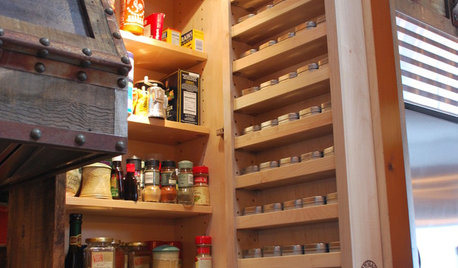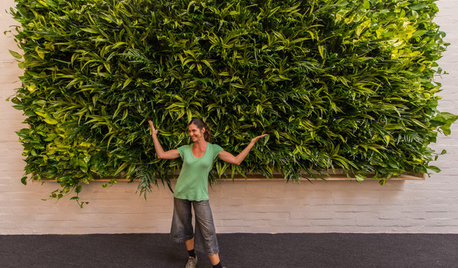fiber row cover really work in OK (tomato)?
nated
11 years ago
Related Stories

EDIBLE GARDENSSummer Crops: How to Grow Tomatoes
Plant tomato seedlings in spring for one of the best tastes of summer, fresh from your backyard
Full Story
DECORATING GUIDESWhat Goes With Leather Furniture?
If that hide-covered sofa is making you seek decorating solutions, we’ve got just the pairings for you
Full Story
GARDENING GUIDESNew Ways to Think About All That Mulch in the Garden
Before you go making a mountain out of a mulch hill, learn the facts about what your plants and soil really want
Full Story
EDIBLE GARDENSGarden BFFs? Why Your Vegetables Are Begging for Companion Plants
Foster friendships among plants for protection from pests, pollination support and color camaraderie
Full Story
GARDENING GUIDESEssential Watering Tips for Your Edible Garden
To give your edible plants just what they need, check out these guidelines for how, when and how much to water
Full Story
REGIONAL GARDEN GUIDESCalifornia Gardener's March Checklist
Give natives and tropicals a well-deserved spotlight — plus, discover an easy herb that keeps on giving
Full Story
KITCHEN DESIGNCountertop and Backsplash: Making the Perfect Match
Zero in on a kitchen combo you'll love with these strategies and great countertop-backsplash mixes for inspiration
Full Story
KITCHEN DESIGN7 Steps to Pantry Perfection
Learn from one homeowner’s plan to reorganize her pantry for real life
Full Story
KITCHEN DESIGNKitchen of the Week: Modern and Rustic Meet in the Woods of Quebec
Tall windows open this handcrafted wood-and-white loft kitchen to the beautiful outdoors
Full Story
HOUSEPLANTSHow to Add a Living Wall
Learn how to choose systems and plants, and what it will cost to bring a bit of the outdoors in or green up a garden wall
Full StoryMore Discussions






Okiedawn OK Zone 7
soonergrandmom
Related Professionals
Erie Landscape Architects & Landscape Designers · Horsham Landscape Architects & Landscape Designers · Lowell Landscape Architects & Landscape Designers · Broomfield Landscape Contractors · Gallatin Landscape Contractors · Hannibal Landscape Contractors · Secaucus Landscape Contractors · Stony Brook Landscape Contractors · Vashon Landscape Contractors · Wilsonville Landscape Contractors · Four Corners Landscape Contractors · Lacey Decks, Patios & Outdoor Enclosures · New Berlin Decks, Patios & Outdoor Enclosures · San Antonio Decks, Patios & Outdoor Enclosures · South Lyon Decks, Patios & Outdoor Enclosuressoonergrandmom
Pamchesbay